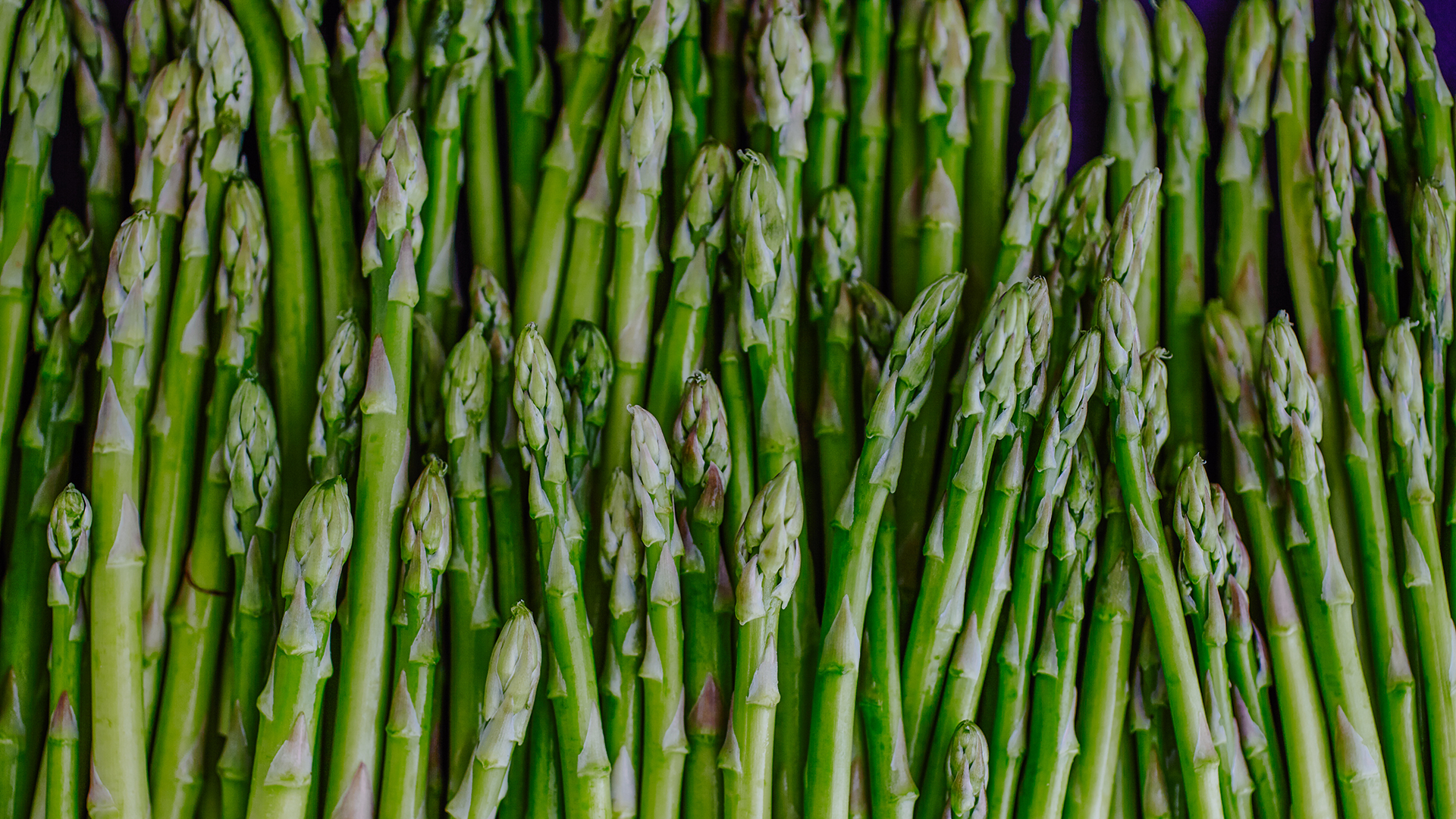
Food enthusiasts and royalty alike have loved this remarkable vegetable throughout history. Native to the Mediterranean, instructions for growing this member of the lily family date back as far as 200 BC. Asparagus grows at an incredible rate — in fact, if the conditions are right, an asparagus spear can grow up to 10 inches in just 24 hours!
Asparagus is full of wonderful nutrients, including potassium and vitamins K, A and C. It’s also a great source of fiber. Including a variety of fruits and vegetables like asparagus in your meals is believed to help fight aging, protect against cancer, reduce the risk of heart disease and lower blood pressure. Not to mention that asparagus is full of flavor, but low in calories. That’s a lot of value in one skinny vegetable!
Here are a few fun facts about the tender little spear
• White asparagus is grown without light in a process called etiolation, which prevents chlorophyll from being produced.
• Asparagus is a natural diuretic.
• Asparagus is one of the only foods considered polite to eat with your fingers.
Nothing heralds in the arrival of spring better than the arrival of asparagus at the supermarket. Though it is typically available year-round, the prime season is February through June, with April marking the height of the season. When choosing asparagus, opt for firm, smooth stalks that are bright green, with closed tips. Asparagus should not be limp, and ridges in the stem indicate an older, drier vegetable. It is generally thought that thin asparagus spears are better, but the larger spears offer more flavor. They do tend to be tougher though, so peeling of the lower stem is recommended with thicker asparagus.
Store asparagus spears upright in water or refrigerated in plastic. Wash thoroughly right before using, making sure to use similar sized stalks for even cooking. To trim asparagus, grasp a spear between two hands and snap the lower stem wherever it gives to pressure. Then use the trimmed asparagus as a guide to cut the remaining spears. And don’t throw away those ends! They make a healthy and crunchy treat for your canine companion.
Here are two ideas for adding asparagus to your weekly menu
Asparagus Frittata
Recipe adapted from allrecipes.com
Serves 4
2 teaspoons olive oil
1 small onion, thinly sliced
1 medium red pepper, chopped
1/2 teaspoon salt
1 pound asparagus, trimmed and cut into 1-inch pieces
4 large eggs, lightly beaten
1 cup shredded Gruyere or Swiss cheese
Heat olive oil into a 10-inch oven-proof frying pan over medium-high heat. Add onions, red pepper and salt and cook, stirring occasionally, until onions are soft, about 3 minutes. Add asparagus, reduce heat to medium-low and cook, covered, until the asparagus are barely tender, 6 to 8 minutes. Pour in eggs and cook until almost set, but still runny on top, about 2 minutes. While cooking, pre-heat the broiler. Sprinkle cheese over eggs and put in oven to broil until cheese is melted and browned, about 3 to 4 minutes. Remove from oven with oven mitts and slide frittata onto a serving plate. Cut into wedges. Can be served warm or at room temperature.
Fresh Tomato and Asparagus Gnocchi
Recipe courtesy of myrecipes.com
Serves 4
1 pound fresh asparagus, trimmed and cut into 2-inch pieces
1 (16-ounce) package gnocchi
1/2 cup chopped sweet onion
2 tablespoons olive oil
4 garlic cloves, chopped fine
4 large tomatoes, seeded and chopped
1/2 cup fresh basil, chopped
1 teaspoon salt
1/2 teaspoon freshly ground pepper
Grated Parmesan cheese
Fill a 3-quart saucepan with salted water. Bring to a boil; add asparagus and gnocchi and cook 2 to 4 minutes or until tender. Drain. Sauté onion in hot oil in a medium skillet over medium-high heat 5 to 6 minutes until golden; add garlic and cook 1 minute. Add tomatoes, and cook 3 to 5 minutes. Stir in basil, salt, pepper, and asparagus mixture. Sprinkle each serving with Parmesan cheese; serve immediately.






